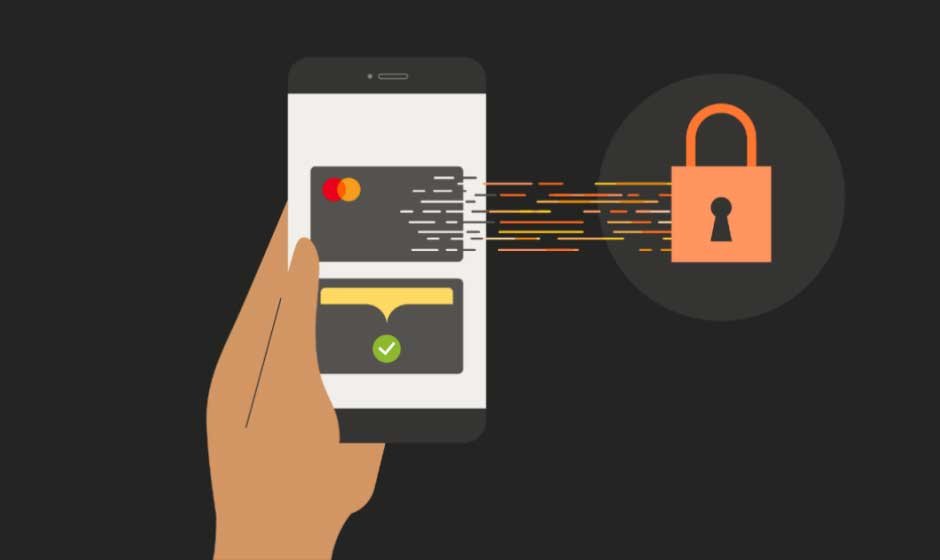The more digital payments are being adopted, the greater the threats to security increase. From cyber attacks trying to steal money to people trying to get your card information, online payments are as vulnerable as it is convenient, which is why security measures are necessary.
But what if those bad guys never had your credit card numbers in the first place? Tokenisation is the process of turning details into a token. This technique helps protect billions of payments every year, including the huge rise in digital wallet transactions made possible by tokenisation services.
When you tap your tap-to-pay card or phone in a store, or make a payment in an app or online, your actual card information is never shared. This is because tokenisation changes your 16-digit card number into a different number that is stored on your device. In this article, we’re diving deep into payment tokenization.
What is Tokenisation?
When you tokenise a payment, you protect sensitive information like credit card numbers by replacing them with a random set of characters called a “token.” This method keeps payment information safe during transactions because it doesn’t use or keep the real card information.
If someone got the token, they wouldn’t be able to use it to buy anything because it doesn’t have the real payment information. Using tokens instead of real card information can make payments safer and easier for customers. This also makes it less likely that data will be stolen or that any type of fraud will happen.
How does Tokenisation Work?
Tokenisation changes sensitive payment information into a non-sensitive version that can be safely stored and sent without putting the original data at risk of security threats. In the context of processing payments, tokenisation goes as follows:
Data collection
When a customer starts a transaction, they give the business their payment information, like their credit card number.
Tokenisation request
Depending on how the business’s payment system works, they might send the private information to a secure tokenisation service. A payment gateway or a third-party tokenisation vendor usually offers this service. When a business uses payment hardware or software that supports tokenisation, like Juspay, tokenisation happens automatically as part of the payment process.
Token generation
The tokenisation process uses a mix of algorithms, encryption methods, and safe storage to make a unique token that stands for the original payment information. This token is usually a random string of letters or numbers that doesn’t mean anything or have any value outside of the payment system.
Token storage
The sensitive payment information is replaced by the token, which is stored in the business’s system. The tokenisation service’s secure vault keeps the original payment information safe. It is designed to keep it safe from hackers and other people who shouldn’t have access to it.
Token usage
The business can send the token to the payment processor or tokenisation service when they need to process the transaction. The service then securely maps the token back to the original payment data, letting the transaction go through without giving the business or other middlemen access to the sensitive information.
Token reusability
You can use the same token over and over again for things like subscriptions or saved customer profiles without having to collect sensitive payment information again. This makes the payment process easier while keeping it safe.
Where can Tokenisation be Used?
There are many use cases where tokens can and should be used. They are:
In-store, using a phone or watch
You can pay safely and without touching anything at checkout with a digital wallet like Apple Pay, Samsung Pay, or Google Pay. These digital wallets work like contactless cards, so you can use them anywhere that accepts tap-to-pay cards. The only difference is that you can make bigger purchases because you have to verify your identity on your device before you tap.
Online – using a card on file
You can also make tokenised purchases online at stores where you’ve saved your card information, like an e-commerce site or a streaming service for subscription payments. Your card on file is replaced by a token, and the merchant calls your card company to get a cryptogram for each transaction, which keeps your purchase safe.
Online – guest checkout
If you don’t shop often and your card information isn’t saved, you can also use a digital wallet to tokenise your card information at guest checkout. You won’t have to enter your card information or be sent to another site to finish the purchase.
Benefits of Payment Tokenization for various businesses
Now that you know how payment tokenization works and what it is, let’s look at why payment tokenization is important for different kinds of businesses.
It is good for many kinds of businesses that take payments by debit or credit card and other digital payment methods.
Improved security
Tokenisation is a key way to lower the risk of data breaches and fraud in payments because it replaces sensitive card information with a token that isn’t sensitive. This keeps the real payment information safe from fraudsters and scammers during the transaction, which lowers the chance that someone will be able to access or use the data without permission.
Legal compliance
Tokenisation helps businesses follow industry standards like PCI DSS (Payment Card Industry Data Security Standards) by reducing the amount of sensitive payment card data that needs to be stored and processed. Not only do businesses need to follow PCI DSS rules to avoid fines and stay on the right side of the law, but they also need to do so to win over customers.
Better Customer experience
You can make it easier for your customers to check out and earn their trust in your business by lowering the risk of payment fraud and keeping their private information safe. Letting customers use the same tokens over and over again is an easy way to keep them coming back, get them to buy more, and boost sales.
Conclusion
With digital payments being all there is today, it is absolutely important to have security measures in place to protect your card information. Payment tokenization, where tokens or other numbers replace your card information, is an excellent way to ensure security.
















